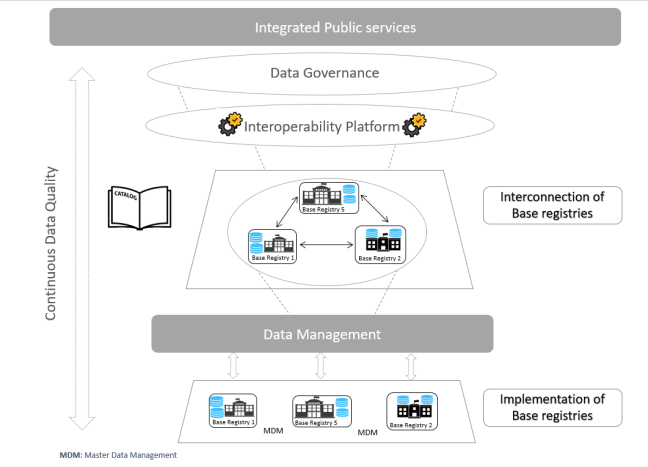The BRAIF conceptual model defines a series of steps to take in order to establish structure-based Base Registries that enable the delivery of cross-border integrated public services. Integrated public services are services, which are delivered under different legal frameworks, policies and strategies. The BRAIF conceptual model presents the necessary phases needed to establish cross-based Base registries within the State, and interoperability governance based on such Base Registries. The starting point of the cycle differs among services depends on their respective maturity levels.
The justification of this approach is illustrated by the most common maturity use cases available for further read in the BRAIF document, page 16.

There are different phases of the cycle, which can be grouped in these categories

|
Phase IPassing from the legacy environment into a Common Governance with a specific Strategy under certain interoperability agreements |

|

|
Phase IISetting the standards and creating more lean processes |

|

|
Phase IIIUsing common data models and mastering the data under profound Data Security and Quality |

|

